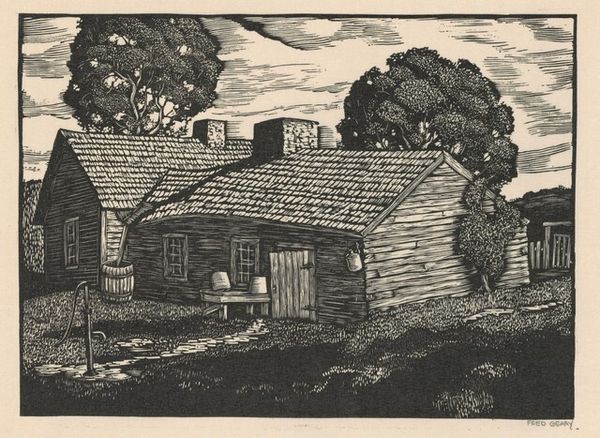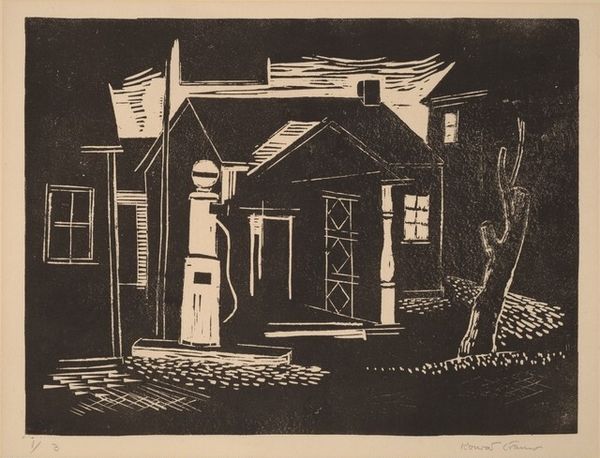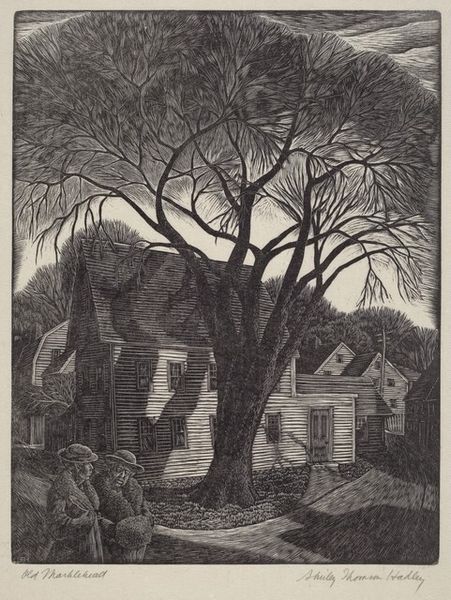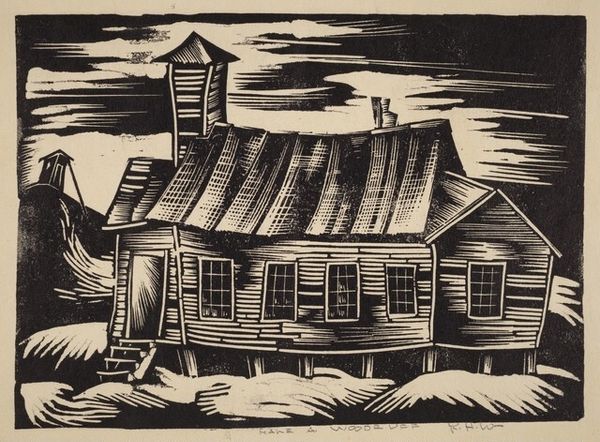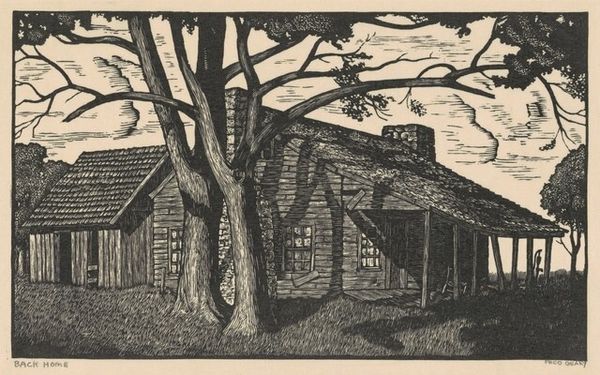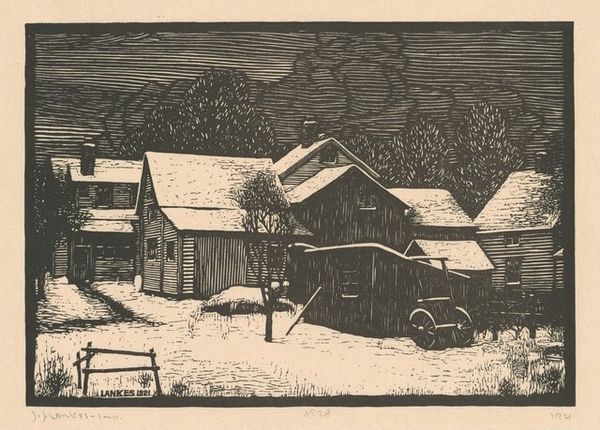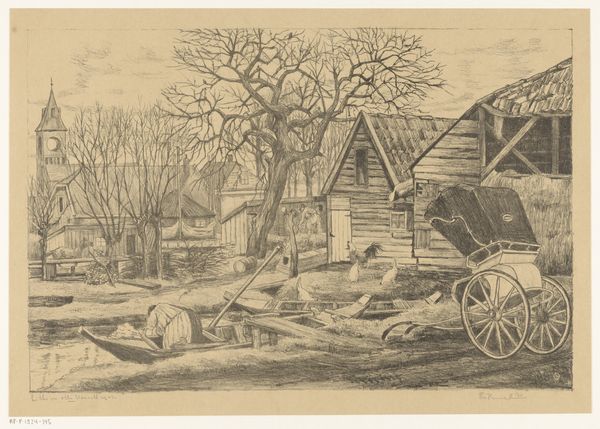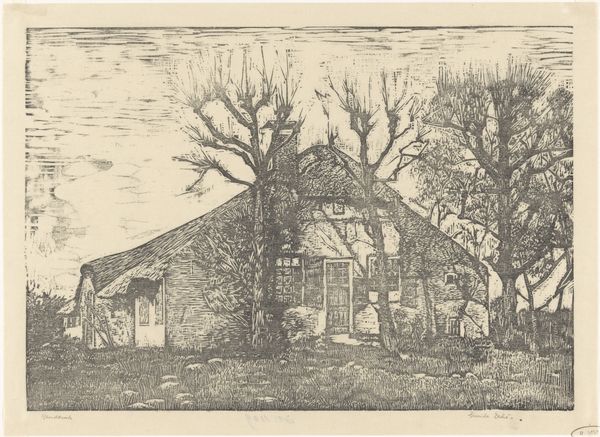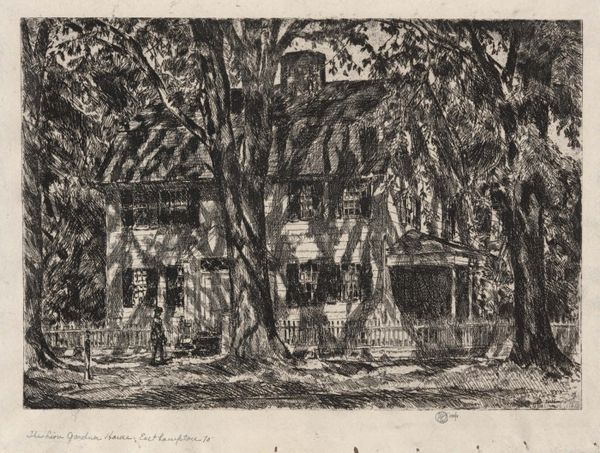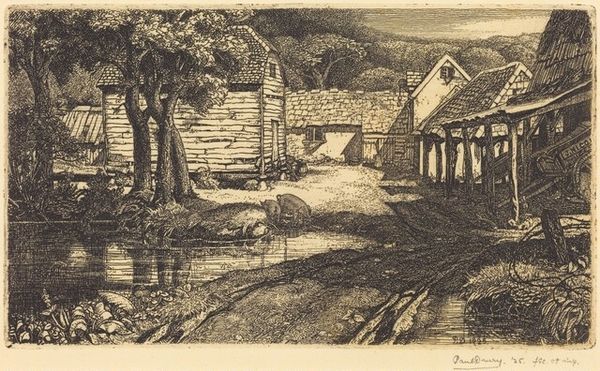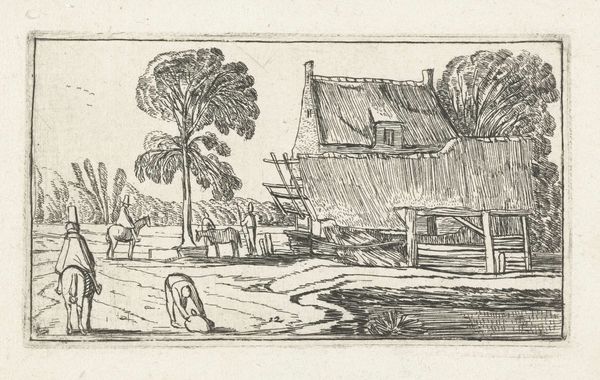
print, woodcut
#
pen drawing
# print
#
landscape
#
woodcut
#
regionalism
#
realism
Dimensions: block: 102 x 127 mm sheet: 156 x 232 mm
Copyright: National Gallery of Art: CC0 1.0
Editor: This is "Corner Japanese Grocery," a print, most likely a woodcut, made by Richard Bennett in the 1930s. There's something about the starkness of the black and white and the rough textures that makes it feel very direct and unvarnished. What jumps out at you when you see it? Curator: Well, for me, it's about the labor embedded in the image, both the labor depicted and the labor of the printmaking process itself. Notice how the artist painstakingly carved away at the woodblock to create this scene of everyday commerce. What kind of labor is being offered in this grocery? How is the landscape consumed to provide these goods? Editor: That's interesting. I was focusing more on the image itself, the shop and its surroundings, but now I see how the printmaking is equally important, if not more so. All of that hatching had to take ages. How does knowing that influence our viewing? Curator: It highlights the physicality of art making, doesn’t it? The woodcut, a ‘low’ art, is presenting the ‘low’ commerce. Both become elevated. This artwork makes you think about the social conditions of its creation and consumption during a specific time, and perhaps leads to a questioning of the cultural consumption during your own lifetime. Editor: So it is almost about democratizing both the image and the means? The artist foregrounds materials and work that might otherwise be backgrounded in traditional analyses? Curator: Exactly. The emphasis shifts from individual genius to the material conditions and the labor that produces both the artwork and the subject it depicts. Editor: Wow. I hadn't thought about the printmaking that way before. I was too focused on what the print represents. Now I see how focusing on the process opens up whole new avenues for interpretation. Curator: Seeing is active. And viewing art like this, the viewer must also perform their own kind of labor.
Comments
No comments
Be the first to comment and join the conversation on the ultimate creative platform.
